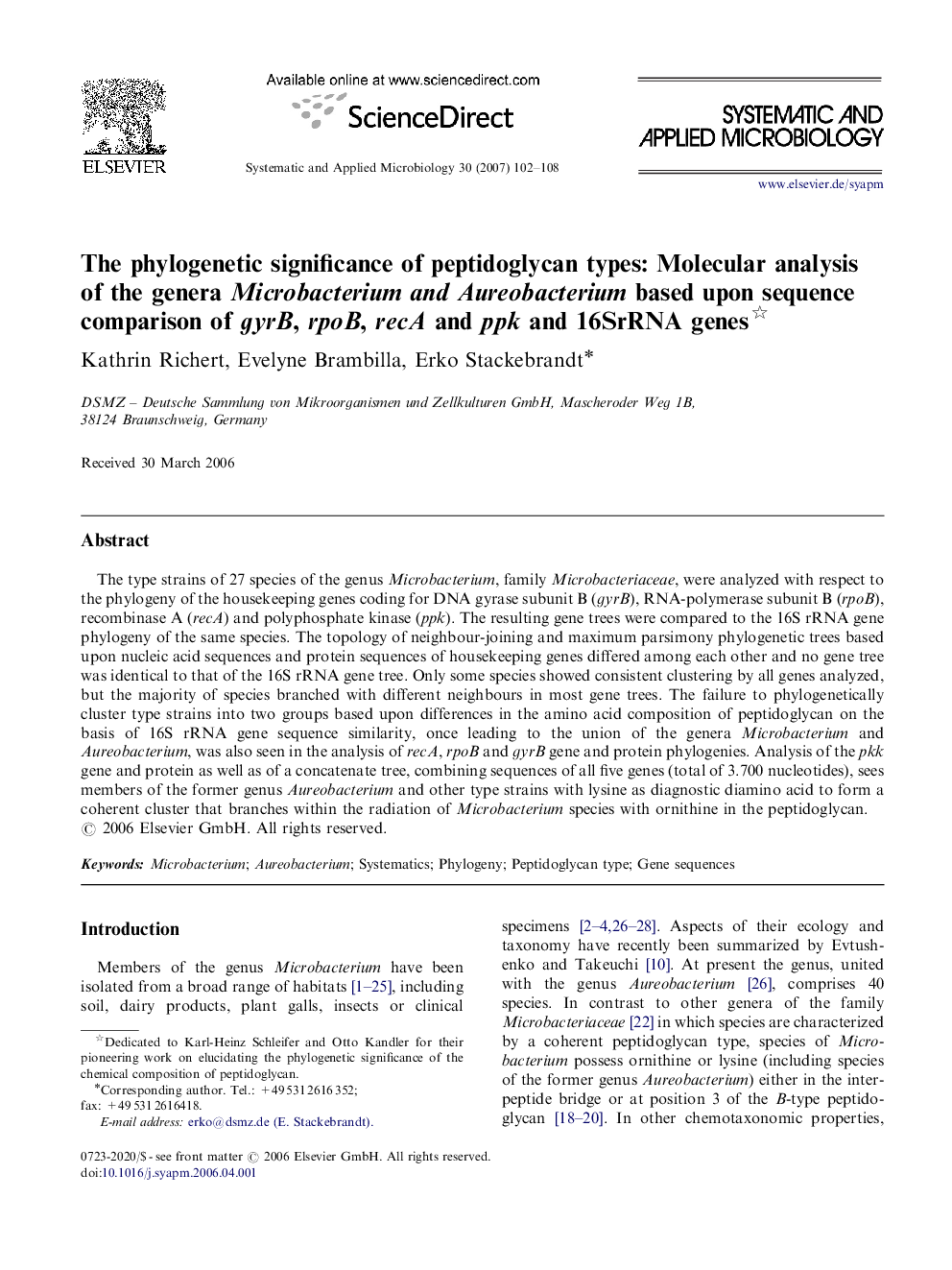| Article ID | Journal | Published Year | Pages | File Type |
|---|---|---|---|---|
| 2063454 | Systematic and Applied Microbiology | 2007 | 7 Pages |
The type strains of 27 species of the genus Microbacterium, family Microbacteriaceae, were analyzed with respect to the phylogeny of the housekeeping genes coding for DNA gyrase subunit B (gyrB), RNA-polymerase subunit B (rpoB), recombinase A (recA) and polyphosphate kinase (ppk). The resulting gene trees were compared to the 16S rRNA gene phylogeny of the same species. The topology of neighbour-joining and maximum parsimony phylogenetic trees based upon nucleic acid sequences and protein sequences of housekeeping genes differed among each other and no gene tree was identical to that of the 16S rRNA gene tree. Only some species showed consistent clustering by all genes analyzed, but the majority of species branched with different neighbours in most gene trees. The failure to phylogenetically cluster type strains into two groups based upon differences in the amino acid composition of peptidoglycan on the basis of 16S rRNA gene sequence similarity, once leading to the union of the genera Microbacterium and Aureobacterium, was also seen in the analysis of recA, rpoB and gyrB gene and protein phylogenies. Analysis of the pkk gene and protein as well as of a concatenate tree, combining sequences of all five genes (total of 3.700 nucleotides), sees members of the former genus Aureobacterium and other type strains with lysine as diagnostic diamino acid to form a coherent cluster that branches within the radiation of Microbacterium species with ornithine in the peptidoglycan.
